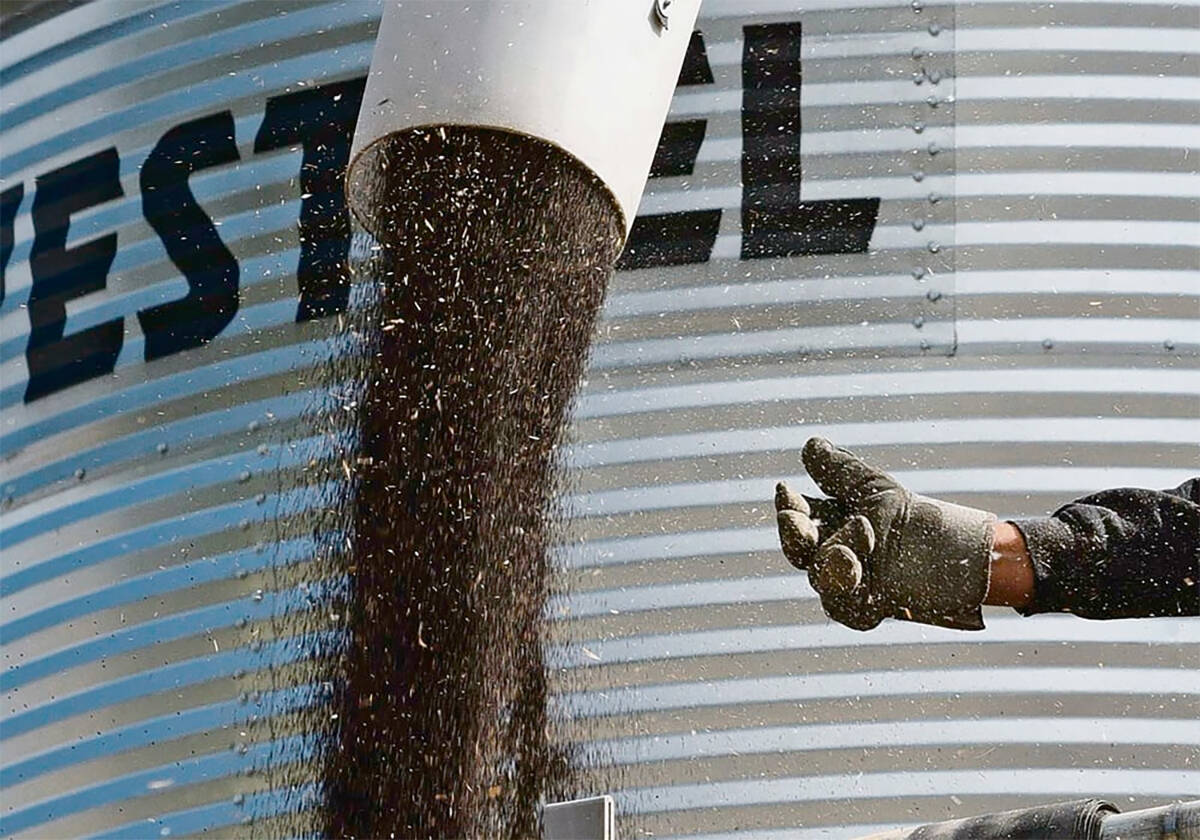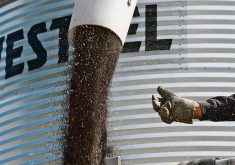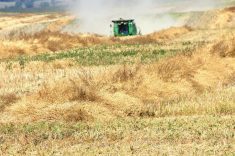RED DEER — It seemed as if energy companies could drill anywhere and the black gold would flow when they first began searching for oil.
Many of those easy-to-access reservoirs have now been depleted and companies are using hydraulic fracturing or “fracking” to remove gas and oil from rock and coal.
The technology was first used in Oklahoma in 1949, said Mike Dawson, president of the Canadian Society for Unconventional Resources.
Unconventional resources are gas and oil found in difficult to access reservoirs, including shale gas, coal bed methane, tight oil, tight gas and gas hydrates found in the Arctic or offshore.
Read Also

Farmers urged to be grain-safe this fall
Working around grain bins comes with risk, from farmers falling to drowning in grain: Experts have five tips to help avoid grain-related accidents this harvest.
“We have hundreds of years of resource potential available to us using current technology at our current consumption rate,” he said.
“The question is not how much gas or oil we have, but how do we get it out of the ground economically and to the benefit of all Canadians.”
The resource is found in sedimentary rocks such as shale, limestone and coal, which hold the molecules between the layers as tightly as the pages of a phone book.
Fracturing technology opens the pages and release the resource to the well bore.
Fluid such as water or gas such as nitrogen are pumped underground, creating pressure that breaks the rock.
A proppant material such as sand or ceramic bead is used to keep the fracture open.
Fracking requires considerable power and pressure underground. Landowners complain about groundwater contamination, gas migration and earth tremours. Conflicts occur.
Dawson said fracking does not causes problems with gas flow or water pollution. Most problems are linked to improper oil or gas well construction.
“There have been some unfortunate incidents, no question about it, where a company has done poor well construction to isolate those shallow groundwater horizons from what they are doing deeper down,” he said.
“Gas molecules will take the path of least resistance if there is a pathway from the reservoir up the groundwater horizon.”
A properly constructed well consists of concrete casings to protect groundwater.
“I can’t say we are 100 percent clean on this because there are companies that will take short cuts,” Dawson said.
The industry must create an environment of technical diligence to prevent these infractions, he added.
“The public is much more engaged and informed about oil and gas activities, so the regulator must engage in more public dialogue than in the past,” he said.
“We need to be doing better than what we have been doing in the past. We need to be squeaky clean because that is what society demands.”
GAS FACTS
•The Alberta Geological Survey of Alberta estimates there could be as much as 14 trillion cubic metres of coal bed methane in Alberta coal. By comparison, Alberta has 5.7 to 7.1 trillion cubic metres of conventional natural gas.
•Shale gas refers to natural gas, mainly methane, found in fine-grained, organic-rich rocks, such as gas shales.
•Shale does not refer to a specific type of rock. Instead, it describes rocks with more fine-grained particles than coarse-grained particles. They include shale (fissile) and mudstone (nonfissile); siltstone; fine-grained sandstone interlaminated with shale or mudstone; and carbonate rocks.
•Gas-prone shale may be associated with other resources, such as tight gas and coal bed methane in areas where shale is interbedded with coal.
•Gas shales are source rocks that have not released all of their generated hydrocarbons.
•In gas shale, shale is a reservoir, source rock and trap for natural gas. The natural gas found in these rocks is considered unconventional, similar to coal bed methane.
Source: Canadian Assoc. of Petroleum Producers















